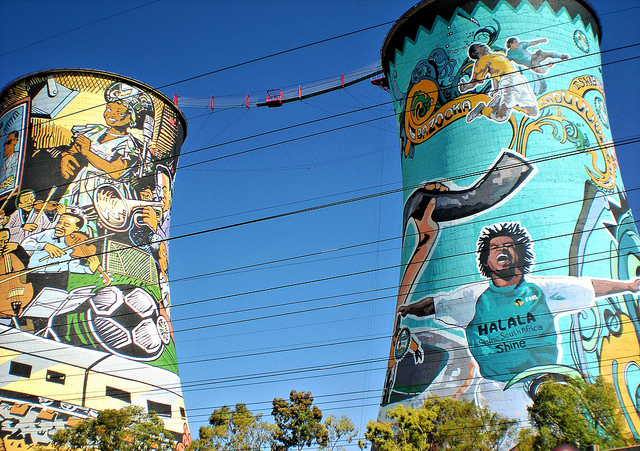The Coalition’s safeguard mechanism is designed to ensure that affected facilities can readily comply by setting loose caps on emissions. It is unlikely to contribute to emissions reductions in its current form, but could form the basis for a functional emissions trading scheme (ETS) in the future.
The safeguard mechanism, the government’s biggest kept secret from its electorate, silently slipped into operation on 1 July. After having successfully savaged the former Labor government for implementing a cap-and-trade ETS and then counting its repeal as one of its greatest achievements, the Coalition’s own ETS is now operational. However, those looking to cash-in their Australian carbon credit units (ACCUs) should not get their hopes up, as explained below.
The Coalition’s ETS is not a cap-and-trade scheme but rather more akin to a baseline and credit mechanism – trending towards that proposed for the electricity industry by Labor. Such mechanisms are generally viewed as second best to a cap-and-trade ETS due to the administrative demands in setting individual baselines. The process of setting these baselines is open to influence and, to the extent that the baseline is set by reference to an emissions intensity factor being applied to a variable such as output, can lead to uncertainty in setting targets for emissions reductions. The price of emissions intensive products may also be left unaffected, thereby not presenting any demand side pressure to reduce emissions that an ETS can deliver. The Coalition’s scheme is further limited as it only applies to facilities with emissions greater than 100,000 tonnes per annum, much higher than the 25,000 tonnes threshold of the repealed ETS.
The weak environmental features of the scheme are not surprising given that it was essentially forced on the government by a hostile Senate savvy enough to appreciate that the government’s flagship emissions reduction fund (ERF) might achieve no net reductions in emissions in the absence of an effective “safeguard” mechanism. Whilst Minister Hunt’s initial proposed safeguard mechanism had no sanctions at all, with entities just expected to comply. When the regime was introduced in September last year, after seemingly getting lost in the excitement of the Prime Ministerial merry-go-round, contains both an option to purchase units to offset excess emissions and sanctions to accommodate the Senate. However, the prospect of an enlarged market for ACCUs is unlikely to become a reality, at least in the short-term. The baseline setting mechanism contained in the amendments is designed to ensure that few, if any, entities will ever have excess emissions necessitating the acquisition of units.
Baselines under the safeguard mechanism
Under the amendments to the National Greenhouse and Energy Reporting Act 2007 (Cth) facilities that emit direct emissions that exceed 100,000 tonnes CO2-e per annum will be issued with a baseline for their covered emissions. Estimates vary but around 260 facilities are likely to be impacted.
Special rules apply to baseline setting in the electricity, transport and waste management industries that should largely insulate them from the mechanism. For other industries alternative baseline setting measures may well have a similar effect. Essentially there are three methods for determining a facility’s baseline, in the absence of which the default baseline will be 100,000 tonnes CO2-e.
Under the first method, the reported-emissions baseline method, baselines are set at the highest level of reported emissions during the financial year years 2009/10 – 2013/14 (with no averaging or adjustment). However, where there is insufficient historical emissions data to make such a determination, or where historical emissions may be a poor indicator of future emissions (either due to significant expansion or inherent emissions variability), the Clean Energy Regulator may set the baseline for a facility by making a calculated-emissions baseline determination. Applications for such a determination must provide an explanation, supporting evidence and an audit report. Such baselines are likely to be based on the estimated highest output multiplied by an intensity factor and will normally last for three years.
A third method of determining baselines is a production-adjusted baseline determination. This will typically be used following the expiry of a calculated-emissions baseline. The intensity factor is then applied to a baseline derived from the actual historical data.
In addition, reductions in emissions intensity may be relied on to vary a facility’s baseline upwards. This might be anticipated for facilities whose emissions exceed their baseline because of increased production, but whose emissions intensity have passed an emissions intensity test, namely that emission intensity has improved compared to historical performance.
Given these generous baseline setting rules it is unlikely that the safeguard mechanism will further the cause of reducing Australia’s emissions.
The trading mechanism
In the (rare?) event that a facility is not able to keep emissions below baseline levels then it will need to address its “excess emissions situation”. Entities have a number of options to manage excess emissions. Firstly, entities may take advantage of the averaging concession whereby a facility may exceed its baseline in one year, so long as average emissions over the extended two or three year multi-year period are below the baseline. In exceptional circumstances a facility operator may apply to the Regulator for an exemption declaration where excess emissions are a direct result of a natural disaster or criminal activity. And finally, operators may be able to purchase ACCUs from other entities and, thereby, reduce their net emissions to below the relevant baseline.
In the event that a facility does not embrace one of these options to manage excess emissions the Regulator has a range of enforcement options. These include issuing infringement notices, accepting enforceable undertakings and seeking injunctions to rectify an excess emissions situation. Where these enforcement options prove insufficient, the Regulator may seek civil penalties through the courts with the maximum amount currently set at $18,000 per day to a maximum of $1.8 million. Payment of the penalty will not excuse the operator who remains under an obligation to rectify the excess emissions situation.
The ability to purchase ACCUs to avoid penalties will increase the demand in the secondary market which potentially could put some upwards pressure on the price of credits. Currently the demand side of the market is largely restricted to those entities that have undertaken to produce credits under an abatement contract with the government and, for some reason, are unable to deliver.
Platform for a future ETS?
At the heart of Labor’s cap-and-trade ETS was to be market forces. The Coalition’s safeguard mechanism is essentially a regulatory mechanism with a market element tacked on. It is clearly not intended to create an active market with the need for trades a last resort. However, there is to be a review of the government’s climate policy in 2017. This will include a review of the safeguard mechanism. Given Australia’s undertaking to reduce emissions by 26-28% below 2005 levels by 2030, and the general view that the ERF is not adequate to meet this undertaking, the safeguard mechanism should be tightened. In particular, the imposition of more stringent and decreasing baselines on affected facilities might be imagined. This could foster more demand for ACCUs. On the other hand, a possible tradeoff for the tighter baselines might be to permit entities that come in below to trade the difference as credits. This could result in the scheme operating as an effective baseline-credit trading scheme, just don’t describe it as an ETS! Or worse, a carbon tax!
The review is also to consider what role international units might play in entities meeting their baseline obligations. This would be an extreme turn around as the Coalition was especially vociferous about Labor’s plan to recognize foreign credits in its ETS. This was, notwithstanding, the generally accepted view that an international carbon market is the most cost effective way for the world to address climate change. Emissions know no national boundaries and providing an incentive for the reduction of emissions where this can be done in the cheapest way possible, regardless of the jurisdiction, makes economic and environmental sense.
Either, or both the recognition of tradeable differences or international credits would be a further blow to beleaguered holders of ACCUs wishing to cash-in on a domestic carbon market. Nevertheless, one way or another the country is chartering a course towards carbon trading – whether under a revamped Coalition safeguard mechanism or Labor’s proposed baseline and credit scheme for the electricity industry and its ETS.
For a more comprehensive comparison of the safeguard mechanism with both the repealed Australian ETS and the Californian ETS see Dabner, Justin, “Fiscal responses to climate change in Australia: a comparison with California” (2016) 31 Australian Tax Forum 131.





Recent Comments